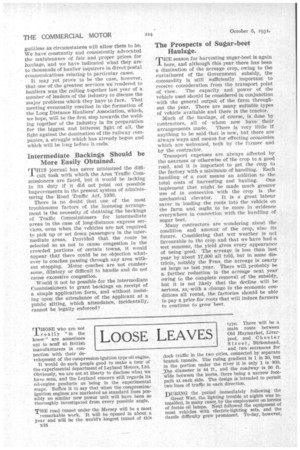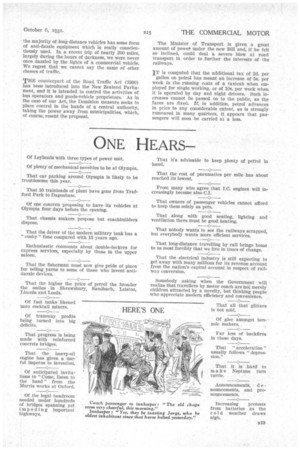LOOSE LEAVES
Page 36

Page 37

If you've noticed an error in this article please click here to report it so we can fix it.
rilHOSE who are not -I-really "in the know" are sometimes apt to scoff at British manufacturers in connection with their development of the compression-ignition type oil engine.
It would do such people good to make a tour of the experimental department of Leyland Motors, Ltd. Obviously, we are not at liberty to disclose what we have seen, and the Leyland concern still regards its oil-engine products as being in the experimental stage. Suffice it to say that when the compressionignition engines are marketed as standard lines possibly no similar new power unit will have been so thoroughly investigated from every possible angle.
THE road tunnel under the Mersey will be a most
remarkable work. It will be opened in about a year and will be the world's longest tunnel of this
n18
type. There will be a main route between Old Haymarket, Liverpool, and Chester Street, Birkenhead,
and two entrances for dock traffic in the two cities, connected by separate branch tunnels. The ruling gradient is 1 in 30, but in the portion under the river it is only 1 in 300. The diameter is 94 ft., and the roadway is 36 ft. iwide between the kerbs, there being a narrow footpath at each side. The design is intended to permit two lines of traffic in each direction.
DURING the period immediately following the Great War, the lighting trouble at nights was intensified, in many cases, by the employment on lorriei of feeble oil lamps. Next followed the equipment of most vehicles with electric-lighting sets, and the dazzle difficulty grew prominent. To-day, however, the majority of long-distance vehicles has some form of anti-dazzle equipment which is really conscientiously used. In a recent trip of nearly 200 miles, largely during the hours of darkness, we were never once dazzled by the lights of a commercial vehicle. We regret that we cannot say the same of other classes of traffic.
THE counterpart of the Road Traffic Act (1930) has been introduced into the New Zealand Parliament, and it is intended to control the activities of bus operators and goods-vehicle proprietors. As in the case of our Act, the Dominion measure seeks to place control in the hands of a central authority, taking the power away from municipalities, which, of course, resent the proposal. The Minister of Transport is given a great amount of powe? under the new Bill and, if he felt so inclined, could deal a severe blow at road transport in order to further the interests of the railways.
IT is computed that the additional tax of 2d, per gallon on petrol has meant an increase of 5s. per week in the running costs of a taxicab when employed for single working, or Of 10s. per week when it is operated by day and night drivers. Such increases cannot be passed on to the public, as the fares are fixed. If, in addition, petrol advances in price to any considerable extent, as is strongly rumoured in many quarters, it appears that passengers will soon be carried at a loss.




































































































